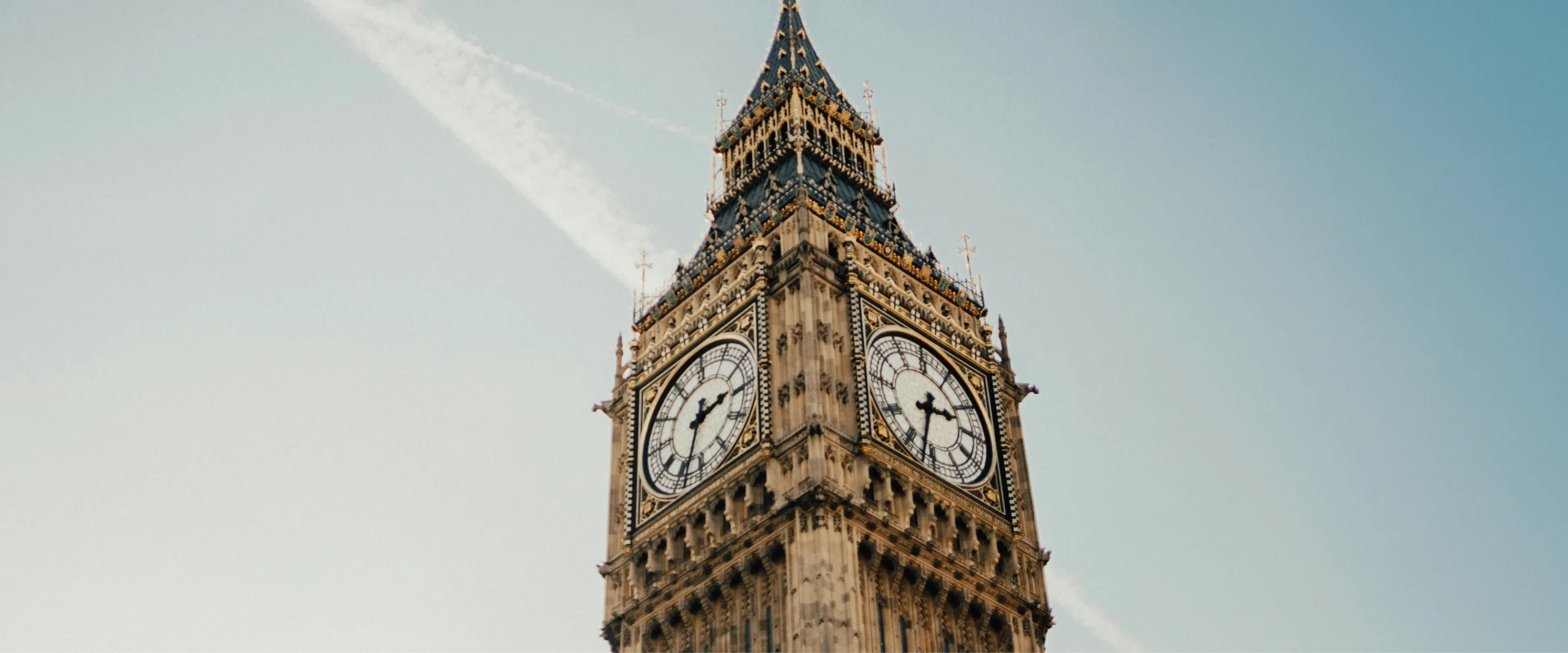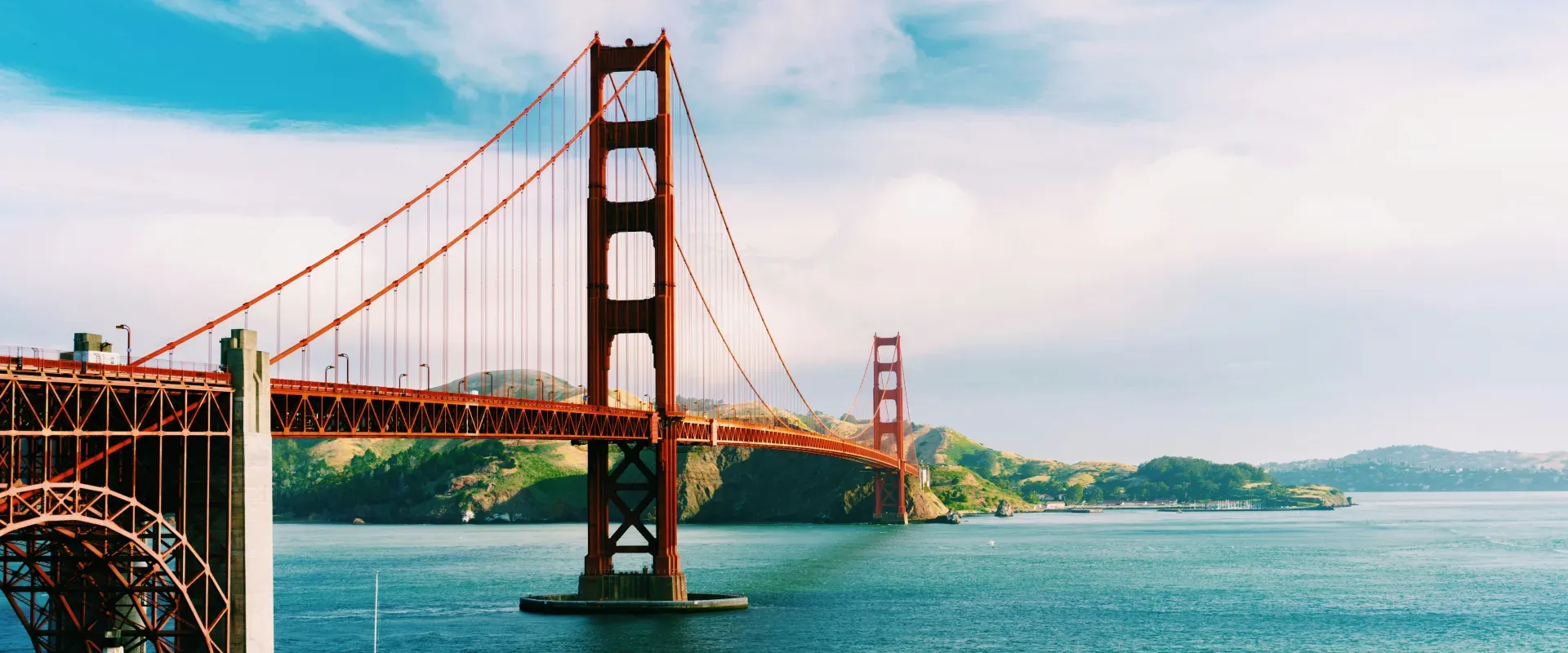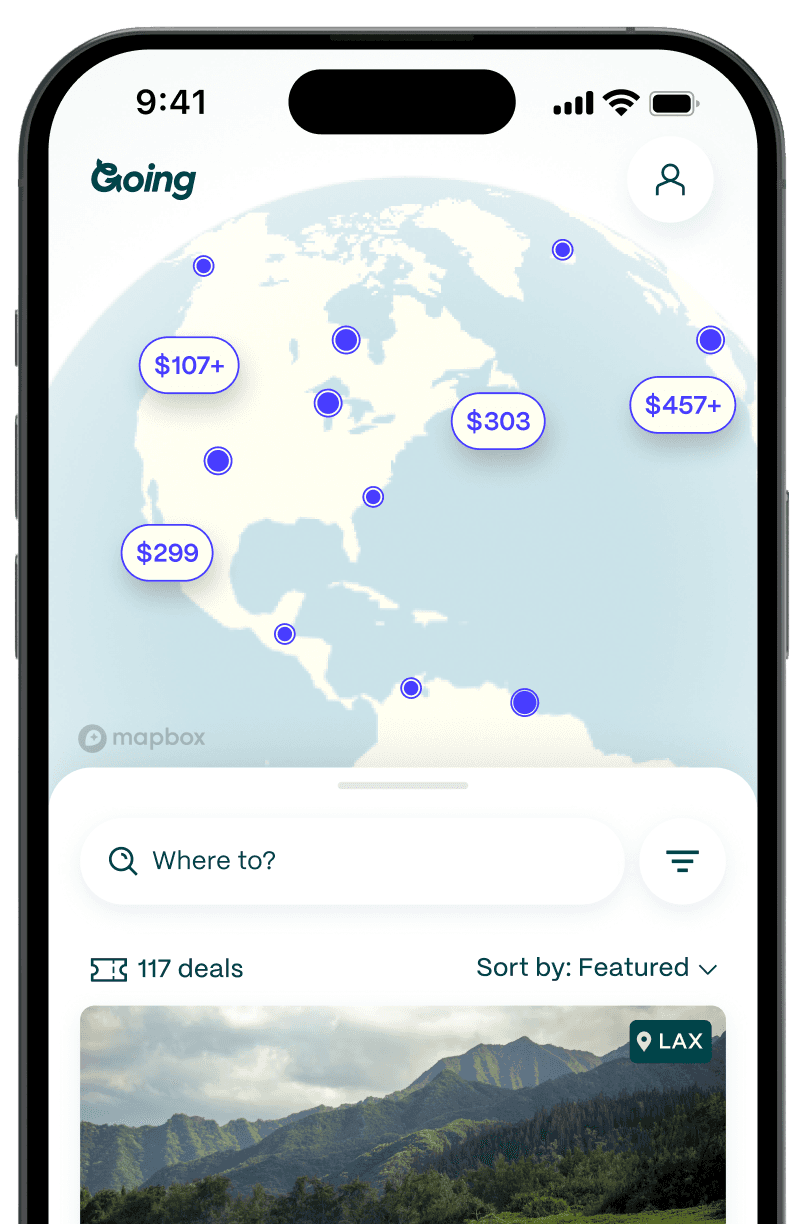
London Itinerary: 2, 3, and 5 Days
Table of Contents
London is a global metropolis with world-class attractions—Big Ben, the River Thames, and the Tower of London need no introduction. If you’re a first-timer to London, you should definitely include at least a few things from the top tier, but don’t stick to it exclusively. There are so many other things waiting for a chance to charm you in the Big Smoke.
There’s the National Gallery, the spectacular greenhouses of Kew Gardens, and the lion sculptures of Trafalgar Square. Then there are the true insider tips, such as the wine bars in the arches of Bermondsey, the quirky Sir John Soane’s Museum, and the clubs of Peckham. London is layered and endless, and there’s always something more to do, see, experience, love, and let change you.
The English capital is big and varied enough to fit any type of traveler, whether you’re after living history, city exploration, emerging music, high culture, culinary adventures, romantic riverside strolls, or stimulating museums. It can be an expensive city, but there’s a surprising number of tasty budget restaurants, and many of the big museums and galleries are free. If you have your heart set on a particular attraction, eatery, or bar, always check if it’s possible to book ahead, especially around the weekend (tickets for certain attractions are often cheaper this way, too).

2-day London itinerary
Day 1: St James’s Park and Soho

For your first day in London, start with two opposing vibes—both very much the “real” London.
Starting in Westminster, get your moment with Big Ben first, and then walk over to St. James’s Park. There are a lot of great parks in London, but this flower-filled gem—full of water, birds, and petals of every color—is something special.
On the west side of the park is Buckingham Palace, the King’s home, where you can go inside for ten weeks in the summer and on certain days in spring and fall. If it’s not open, lounge on the massive fountain out front next to a Queen Victoria statue sitting sagely underneath the golden statue of Victory.
If you have time, pop into Hyde Park and visit the Serpentine Gallery, which puts on contemporary art shows plus the always-interesting summer pavilion (in 2025, it’s by Bangladeshi architect Marina Tabassum), or rent a boat and serenade your loved ones on the Serpentine Lake.
Cream tea is technically an afternoon meal, but making a reservation for lunch is always a good idea. The Ritz, located on the edge of Green Park, is a great choice. Expect sharply cut sandwiches, scones with clotted cream and jam, and perfect little cakes, as many as you’d like. And the tea is endless.
From there, wander about a half mile northeast to Piccadilly Circus. The fountain topped by Eros is tiny in comparison with the one you've just seen at the Palace, but the digital screens are certainly not. This is the entrance to Soho, with its warren of streets stretching out behind. London’s coolest little neighborhood is only one square mile, and it’s not south of anything, as the name comes from an old hunting cry. (And yes, London’s Soho predates any other Soho.)
Here, you can do whatever strikes your fancy. Shop on Carnaby Street, peruse the custom fabrics at Liberty department store, go digging through the shops that sell old records, indie magazines, X-rated books, imported coffees, vintage whiskies, and impossible pasta shapes—everything happens in Soho.
When you’ve had your fill, find yourself a pub that’s a living legend, like The French House (established in 1891), where the beer comes in half pints only. Tear yourself away in time for your reservations at 10 Greek Street, a typical Soho neighborhood restaurant with a seasonal menu and a “little black book” of wine gems (available upon request), or steel yourself for the queue at Barrafina on Dean Street, which doesn’t take reservations for its popular tapas but serves drinks while you wait.
Afterward, tumble out into the buzzing night and let Soho swallow you up. It’s hard to go wrong here, but one tip is to look out for hidden bars—if there’s a very plain door that inexplicably has a well-dressed doorman, you might be on the right track. One such place is the Experimental Cocktail Club in Chinatown, whose cocktails are made up of an eclectic mix of hard-to-find spirits.
Day 2: South Bank and Greenwich

On day two, it’s time to see London from some unique vantage points.
Start the day on Tower Hill. If you get up early, you can visit the Tower of London first and get a tour from one of the beefeaters (ceremonial guards) who will tell you stories and point out the spot where Anne Boleyn lost her head.
Or if you’d like a more leisurely morning, go straight to see Tower Bridge open. (You want Tower Bridge, not London Bridge. Visitors often confuse the two.) Chance is a fine thing, but if you want to be sure to catch the show, confirm the opening schedule and arrive with plenty of time to find your spot. For the best view, walk up onto the bridge to the tower on either side.
Leaving Tower Bridge on the South Bank, walk west toward London Bridge and on to Borough Market, where you can snack your way through the stalls. If you pick up lunch from one of the traders, you can eat it by the Thames, right next to Southwark Cathedral. For a sit-down lunch at the market, try Bao (bao buns and grills), Elliot’s (small plates and wine), and of course, a Monmouth Coffee to cap it all off.
Wander west along the South Bank for a bit. Just past Shakespeare’s Globe is the Tate Modern, the spectacular old power station that houses a world-class gallery. Even if the weather is too good to spend much time indoors, step inside for a minute to see the Turbine Hall, the gigantic arts space that’s home to works that would fit nowhere else. After all, entry is free. Beyond the Turbine Hall, the Tate Modern curates shows from all around the world, showing you artworks you’ve only ever seen in pictures (Dalí’s “Metamorphosis of Narcissus” and Rothko’s Seagram murals are among the works you might see on display) and even more to challenge and amaze you.
From Bankside pier, hop onto a Thames Clipper boat heading east and get the view of Tower Bridge from below as you head to Greenwich. Once you’re there, walk through the park to the Greenwich Observatory, and get your photo standing with a leg on either side of the east and west hemispheres at the Prime Meridian.
Then, head to Trafalgar Tavern (established in 1837) for a bevvy by the river—for a city with such a prominent waterway, surprisingly few pubs have riverside seating. Stay for a traditional pub dinner of bangers and mash or fish and chips; however, if you fancy a London pie and mash—that’s eel pie with parsley sauce—head to Goddards at Greenwich, where they make them using old-fashioned recipes.
Take the river boat back to Bankside to finish the evening at Lyaness, the award-winning cocktail bar situated within the Sea Containers hotel (you’ll want to reserve a table beforehand). Try one of the cocktails with tree caramel, a house specialty that’s made by manipulating braai wood to extract unique flavors.
3-day London Itinerary
Day 3: Hampstead Heath and Covent Garden

Get some fresh air by starting the day in London’s city woods.
From Hampstead Tube station, wander through streets of beautiful houses. This area started out as a village that was absorbed into London, and it continues to be both aspirational and picturesque. Once you get to Hampstead Heath—a nearly-800-acre public space comprising woodland and meadows—make your way to the Parliament Hill outlook, London’s best place to get an overview of the city and a lovely place to sit and contemplate the world.
Beyond the woods and grassy bits, there’s still a fair bit to do: There’s a playgrounds for kids, tennis and croquet, and ample swimming opportunities, perfect for the warmer months (but if you’re brave like the Londoners, you can swim outside on the Heath year-round).
Choose from the Parliament Hill Lido, a historic open-air swimming pool (unheated), and the Ponds. There’s the mixed pond, which is open to all, and the ladies’ and the men’s ponds. Children under 8 are not permitted at the ponds as they are deep and can be cold. Check the website to plan your visit. Opening hours vary, but there is an option available every day of the year. If you’re visiting during the heat of summer, book your swimming tickets in advance as they sell out.
For lunch, walk back toward Hampstead station to Ginger & White for your eggs and sandwiches. Or if you’re in the mood for something fancier, Jin Kichi is the locals’ choice for great Japanese food.
Afterward, get on the Tube and take the Northern Line to Tottenham Court Road station—it’s time to immerse yourself in the wonders of the British Museum. Contrary to the name, this museum covers the entire world, so have a look at the map and make your choices, unless you want to spend the entire day there (not a terrible idea!). There are more than 50 galleries to choose from, including exhibits from the Roman Empire and ancient Egypt. Don’t miss the Rosetta Stone (which unlocked the mystery of the hieroglyphs), the Parthenon sculptures from the Acropolis in Athens, and a Rapa Nui moai statue.
Finish the day in Covent Garden. The history of the Lamb & Flag pub goes all the way back to 1772—it was once known for staging bare-knuckle fights. While there’s no fighting anymore, the alley location still makes it feel like you’ve happened upon something hidden.
For dinner, book ahead at J Sheekey for the quintessential Theatreland seafood restaurant experience, popular with actors as well as audiences since its establishment in 1896. If it’s a Sunday, stay for the live jazz show, and if not, head out to Covent Garden Market and see what kind of street performances you might catch.
5-day London Itinerary
Day 4: Kensington and Notting Hill
On day 4, you’re digging for treasure by exploring museums and street markets.
Starting in Knightsbridge, walk past Harrods, the luxury department store famous for selling everything you can think of "from a pin to an elephant," and on to the Victoria & Albert Museum. The V&A is a treasure trove of 2.8 million objects covering all of human history. Here, you can explore everything in the world of design, including textiles, ceramics, jewelry, printmaking, furniture, glass, and sculpture. Of particular note is the V&A Photography Centre, showcasing historic as well as contemporary imagery.
As lunchtime approaches on your jaunt through leafy Kensington, decide if you’re up for joining the queue at Dishoom; there’s a branch of the popular Persian-Indian restaurant close to High Street Kensington station. (The gunpowder potatoes and the chicken ruby are both musts.) You also can’t go wrong with Maggie Jones’s, a local favorite that’s friendly and traditional in both decor and menu.
The afternoon is all about Portobello Road Market in Notting Hill. Try and time this to a Saturday—the main market day—but if that’s not possible, there’s still plenty to see. The historic market has five main sections: clothing and fashion, secondhand treasure, household goods, fruit and vegetables, and antiques. The market is a sight in itself for its vibrancy, multiculturalism, buzz, and quirkiness. There’s no question you’ll see things here you had no idea existed.
For dinner, you're spoiled for choice in Notting Hill. Core by Clare Smyth has three Michelin stars for its European food, but it’s decidedly not pompous. If you’re after quality vegan food, head to Farmacy, where the “clean indulgence” concept draws a crowd. And then there’s Fez Mangal, which usually has a queue for its spectacular Turkish food, but quick service means you’ll be eating in no time.
Day 5: The Barbican and Shoreditch
For the final day, you’ll keep it to local favorites only.
The day starts at the Barbican Centre, an icon of brutalist architecture and a radical experiment in inner-city living. Stunning to look at, it’s a city within a city, with flats around an artificial lake, a library, school, church, and cultural center containing an art gallery, cinema, and performance space for theater, dance, and music. Check what’s on while you’re visiting. If the Barbican Conservatory is open during your visit, you won’t want to miss it (and you should definitely book ahead). The space is a secluded indoor tropical garden that feels like discovering a secret.
Lunch at St. John in Smithfield is something to write home about—this is a “nose to tail eating” establishment that uses the whole animal, with pig’s ear, ox heart, and tripe all present on the menu alongside more standard cuts. The roasted bone marrow is legendary.
After lunch, head to Farringdon station and take the Circle Line to Liverpool Street station—you’re heading to Shoreditch. Once a cutting-edge haven of hipster cool, this area has also been home to London’s tech scene; now it’s grown up a little to also have some brilliant restaurants. Wander about and soak in the energy of this cultural area, pop into the cute shops, and visit a little art gallery. Go nuts at Ballie Ballerson, an adult ball pit that doubles as a cocktail bar. For something completely different, Shoreditch has the Museum of the Home, the recently refurbished museum of how we live, as well as some adorable parks and a much-loved walking path that runs along the Regent’s Canal.
For dinner, walk or get the bus to Dalston for your reservation at Little Duck The Picklery (a fermenting kitchen and wine bar) or Angelina, which serves crowd-pleasing Japanese Italian food. Afterwards, Dalston is the choice for up-and-coming bars and clubs—Club Makossa has the coolest DJs and freshest music, and the Dalston Superstore is a beating heart in East London’s queer scene. Or you can make your way back down to Shoreditch for a wider choice of music styles, DJ sets, drag bingo, and sweaty dancefloors. If that’s too loud, you may appreciate the area’s many great pubs—George & Vulture is a surefire choice, as it has the somewhat-random honor of being the “tallest pub in London since 1870”.
Stay out late enough and you may well find yourself on Brick Lane clutching a bagel. Beigel Bake is open 24 hours a day, serving hungry hordes looking for salt beef with mustard or salmon with cream cheese. It’s the perfect ending to a day (or stay) in London.
Key London Travel Details
Where to stay in London
London’s neighborhoods are vast and varied—think of them like separate villages within the city. With London’s attractions spread out, you’ll have something spectacular on your doorstep no matter where you choose to make your home during your stay.
Leafy Bloomsbury has the British Museum, and Covent Garden has the Royal Opera House and family-friendly London Transport Museum. Notting Hill has the spectacular Portobello Road Market, South Bank has the Tate Modern and Shakespeare’s Globe, Shoreditch has the best nightlife, and Hackney has the coolest graffiti and best people-watching on a sunny day. Kensington has the best parks—or maybe that’s actually Regent’s Park in Primrose Hill. The jury’s still out, but rest assured: You will enjoy yourself no matter what.
London’s hotel scene is eclectic and wide-ranging, meeting every need and budget. In general, hotels are most expensive in Covent Garden and the surrounding areas and get less so as you move outward. This means you can get a good deal on something nice if you’re willing to spend a little more time on the Tube. Equally, if you compromise on style, you can do surprisingly well at sticking to a budget in the center of town, too.
Basic hotels start at £100-£150. The Gyle near King’s Cross (from £160 for a double) is a great choice for some whimsy and charm at the low end, and Mama Shelter (from £150 for a double) is a riot for the senses at good value in Hackney.
Mid-range hotels will be around £250, with lots of choices across the city. The Hoxton (from £220 for a double) on South Bank, with branches also in Holborn and Shoreditch, is a delightful example of upscale urban design, and The Zetter Townhouse (from £270 for a double) in Marylebone excels in eclectic Victoriana with gilt-edged furniture and curiosities at every turn. (There’s another branch in Clerkenwell.)
Hotels at the high end go from £350-£650 and beyond. The Chiltern Firehouse (from £650 for a double) in Marylebone hits the bullseye for style, and the Baglioni Hotel London in Kensington (from £480 for a double) is the place to mix luxury with family-friendliness.
How to get around London
London is big, so you’ll need to spend some time in transit; luckily, the public transport network is great. Locals will point you to the free Citymapper app to find the best travel route. You can even type in the time of day you’ll be traveling for the most accurate time estimate (handy if you have dinner reservations). Your ticket for London’s transport system will cover everything: the Tube, bus, suburban rail, Docklands Light Railway, and Overground. If your debit or credit card doesn’t have foreign transaction fees, you can possibly use this to tap in and out of train stations—a full-day rate is automatically implemented when the cap of £11.70 is reached. If not, you can buy an Oyster, a pre-loaded travel card. If you’re in London for longer, you can get tickets for a week or a month, which offer notable savings. All these options are available from most Tube and train stations.
While there are plenty of day trip options within the rail network, much of the English countryside requires a car for proper exploration. You can rent a car in London and head out on the motorway, but if money is a concern, one trick is to take the train out of the city and pick up a local rental car for a fraction of the price. Driving on the left isn’t as hard as it looks, but be warned that the UK is very fond of roundabouts and narrow country roads.
If you’re solely sticking to London, don’t bother renting a car—it’s more trouble than it’s worth. In addition to expensive parking, there’s also the congestion charge, a £15 fee for driving into the city center. If you need a custom ride, just hail a taxi.
When to go to London
No one can guarantee it won’t rain, but London is exceptionally lovely in spring. The cherry blossoms are out and so is seemingly everyone who lives here, flocking to the streets and beer gardens with a palpable sense of relief after the long winter.
London summers are truly glorious. It’s green, lush, and warm—this is peak season. If it rains, it won’t last long, and while you can run into a heatwave in August, it rarely goes over 95°F (35°C).
London’s autumns are beautiful, as days are still warm but now in full autumn color, if with some risk of rain.
In winter, temperatures can drop to freezing, and the rain can even turn to snow, making this the off season. But everything is also less busy, and there are fewer things more cozy than a pub with a fireplace on a cold winter evening.
London observes the UK’s bank holidays, when the city’s parks (and day trip destinations) will be busier. Except for Christmas Day, London does not shut down for religious holidays. Other dates of note are the London Marathon in April (roads may be closed) and the New Year’s Eve fireworks, when central London will be very busy. Depending on your plans, other events that may impact your visit are Chinese New Year in Chinatown, St. Patrick’s Day on March 17, Trooping the Colour (the King’s official birthday) on June 17, the Wimbledon tennis tournament in July, the Notting Hill Carnival in August, and the fireworks for Bonfire Night on November 5.
See Going's deals on flights to London, and join today to get cheap flights from all over the world delivered right to your inbox.
Other London Guides
Last updated June 23, 2025
Articles you might like
View All
Best Day Trips from San Francisco: 25 Trips You’ll Actually Want to Take (2026)
Jan 6, 2026
12 min read

30 Free Things To Do In San Francisco That People Keep Recommending
Jan 6, 2026
10 min read

Marrakesh: The North African City Where Storytelling Is an Art
Jan 5, 2026
5 min read






